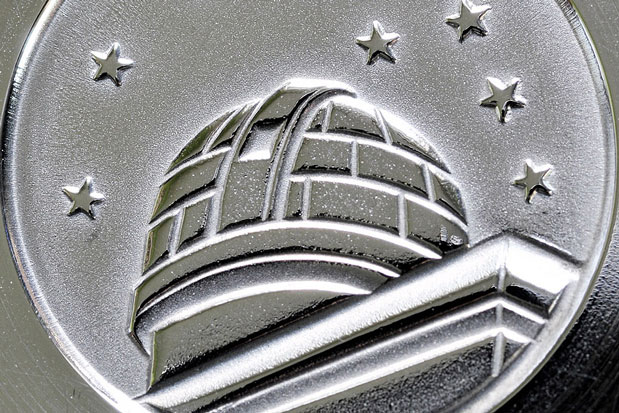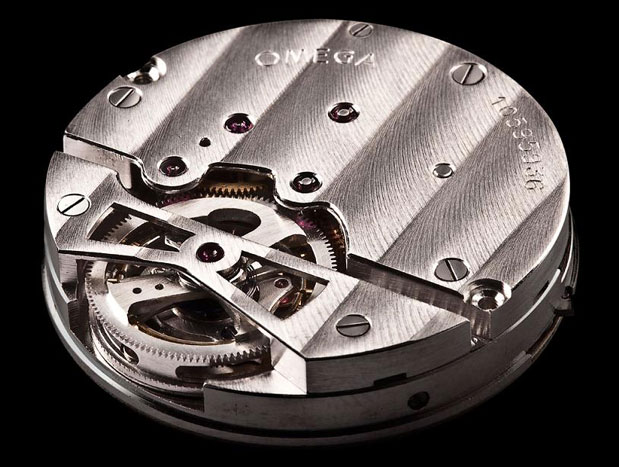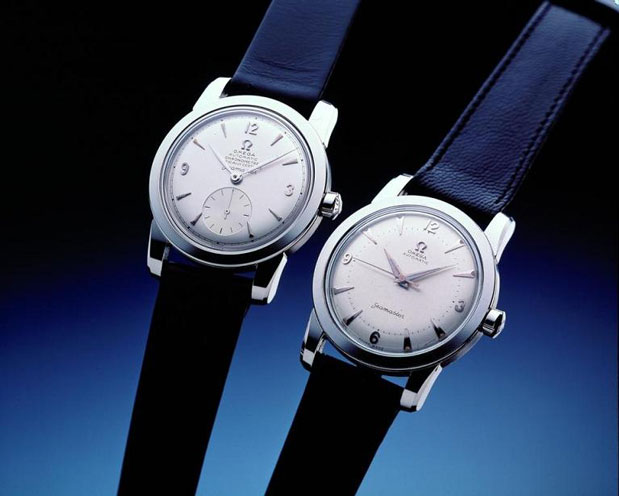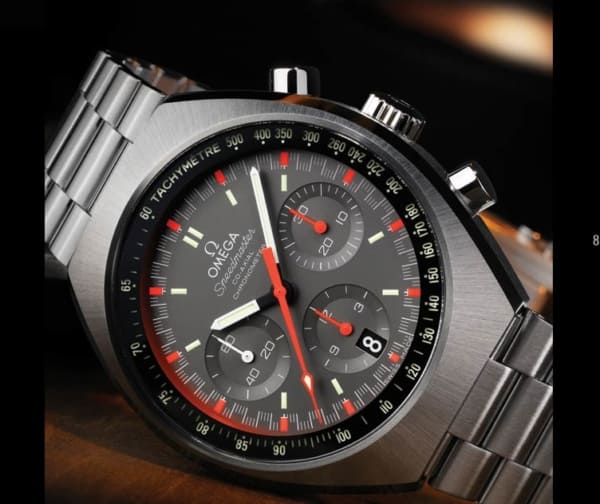It’s pretty hard to dispute – or underestimate – the importance of Omega SA when discussing the Swiss watch industry. They were an early and more than worthy rival to Rolex in the luxury watch arena – and in fact, lured James Bond away from the crown. They made numerous important contributions to the watch industry, both from a customer perspective and a business perspective. They’ve been an official timer of the Olympic games upwards of two dozen times. And of course, there is the glorious Speedmaster Professional.
So how did the brand start, and where did it come from?
Early History
Louis Brant was 23 when he founded the Comptoir d´établissage Louis Brandt in 1848. Brant located his workshop in La Chaux de Fonds and assembled pocket watches there, to be distributed throughout Europe.
Sons Louis-Paul and César joined the company in July 1877, and the name was modified to Louis Brandt & Fils.
The elder Brant died in 1879, and his sons, Louis-Paul and César Brandt took over the company. The brothers’ major contribution to the business was abandoning the inefficient and unpredictable comptoir, or workshop system in favor of in-house manufacturing and its greater overall control of production. With this new system of precision manufacture, Louis Brand & Fils watches became more and more noted for their accuracy, setting them on a path of repeated successes in trials run by the observatories of the world.
Louis-Paul and César Brandt both died in 1903, leaving a group of four family members to inherit the brand. Paul-Emile Brant was the eldest at 23. By this time, Omega was producing nearly a quarter of a million watches a year. At the same time, the company is renamed again, this time to S.A. Louis Brandt & Frère (Frère is ‘brother’ in French), Omega Watch Co. in honor of the Omega calibre which had been introduced in 1894 and was enjoying immense success.
Paul-Emile was a great influence on Omega’s direction. He was a master strategist, and pushed hard for an alliance with Tissot. Ultimately, that alliance led to the merging of the two brands to form the Société Suisse pour l’Industrie Horlogère (SSIH) in 1930. The pre-war and war years saw numerous contracts with several militaries, and ensured a solid financial foundation for Omega. In 1932 Lemania joined the SSIH fold. And the same year, with the company having proven over and over just how accurate its timepieces were, the Olympics came calling.
Paul-Emile led the company until 1955, when Joseph Reiser took over. During those mid-century years, Omega created or acquired numerous companies, continuing to vertically integrate wherever possible. Among those acquisitions was Lemania, which would prove valuable indeed with the introduction of the Speedmaster.
Omega response to the quartz crisis was two-fold. On one hand they continued with improving their mechanical calibres and offering evolutionary pieces like the Mark series of Speedmasters, and on the other hand developing high quality quartz watches – including a quartz digital Speedmaster.
Unfortunately, the move to quartz occurred too late, and by the late 1970s, SIHH was in financial trouble. Even a 1981 bailout by the Swiss banking industry could only provide temporary relief against the Quartz crisis. In 1983, SIHH and ASUAG merged to become SSIH/ASUAG Holding Company, the precursor to the Swatch Group.
Notable References
The original Omega calibre, a pocket watch movement (for which the company was renamed in 1903), was released in 1894. This calibre was a direct result of the advanced precision manufacturing techniques the Brothers Brant had led the company to incorporate. The calibre was produced until 1967, enjoying an incredible 74-year production run, and certainly worthy of the brand becoming its namesake.

In 1917 the British Royal Flying Corps chose Omega as their official timekeepers for its combat units. The U.S. Army did the same a year later.
Omega produced the first tourbillon wristwatch calibre in the world, the 30i, in 1947. Though only 12 examples were made, the 30i set accuracy records at the Observatory Trials of 1950 in Geneva.
The Seamaster first appeared in 1948. This was, of course, the brand’s 100th anniversary. Inspired by the seals on submarines in WWII, these watches were among the first to feature rubber O-ring gaskets, rather than the shellac or lead-based seals previously used. The rubber was relatively impervious to large swings in temperature, so this was a major advance.
The Seamaster Professional line was introduced in 1957. That was the now legendary Seamaster 300. Although the Seamaster had been used sporadically in diving situations before, the 300 was really the beginning of the Seamaster as a true diver’s watch.
The Ploprof Seamaster 600 arrived on store shelves in 1970, after several years of testing and development. Ploprof was a shortening of the term Plongeur Professional, or Professional Diver. Its non-symmetric case and huge locking bezel made the watch instantly recognizable – and an icon of early five watches. The Ploprof is currently enjoying a second life as a current model, an homage to the original.
The COSC chronometer-certified Constellation appeared in 1952. The watchword (excuse the pun) for the Constellation has always been refined cases and accurate movements. One well-known, but otherwise unremarkable, example was originally sold in1969. In 2005, it was sent back to Omega for routine service with the additional request that it be recertified as a chronometer by COSC. And indeed it was, 36 years after first being sold.
First released in 1957, the Speedmaster was originally conceived as part of the Seamaster line, and was the result of a joint development effort between Omega and its SSIH sibling, Lemania. In fact, the dial on early references read “Speedmaster,” but the case back was signed “Seamaster.” On March 1, 1965, the Speedmaster made history for both watch and space junkies when it was declared “Flight Qualified for all Manned Space Missions” by NASA. These days the Speedmaster line has exploded with new references, homages, and anniversary editions. Of course, the Moon Watch remains at the top of the pyramid. We gave the Speedy a thorough treatment in our recent five-part series.
George Daniels’ co-axial escapement came on board in 1999, with the first watches released with calibre 2500. The 8500 series of proprietary calibres was released in 2007, and more recently, the 9300 series of chronograph calibres, all in-house movements which incorporate the co-axial escapement.
Sports Timing
Omega has had numerous Olympic firsts. They were the first private company to be entrusted with timing the Games (Los Angeles, 1932). They were the first with a water resistant photoelectric cell (London, 1948), and electronic timing (Helsinki, 1952). And they’ve added firsts nearly every Olympiad since. But it all started with 30 stopwatches and one technician sent to Los Angeles in 1932.
Often, when you see Omega’s logo as the official timer at sporting events, particularly swimming and various Grand Prix athletic events, it’s really Swiss Timing handling the timing duties. Swiss Timing is a sister company to Omega under the Swatch Group banner. The company was founded in July of 1972 and built on the timing knowledge gained through Omega’s and Longines’ sports timing experience earlier in the 20th Century.
Other Notable Accomplishments
Observatory trials were chronometry events held periodically during the 19th and 20th centuries. The emphasis was on chronometry and the extremely precise measurement of time. These events were intense in the extreme – 44 days long, with movements tested in 5 positions and through three temperature changes. Trials held at Neuchatel were open to all manufacturers. Trials held in Geneva were only open to Geneva based brands. Winners were acclaimed throughout Europe in general, and in the watchmaking community specifically.

Omega and Patek Philippe were the only brands to participate in every year a trial was held. In all, Omega won dozens of firsts at these trials, many of them in Geneva, which was deemed most prestigious. The work that led to these triumphs also led to Omega being by far the largest manufacturer of COSC certified chronometers during the 1960s.
Bond – James Bond
James Bond was spirited away from the military tradition of Rolex and the spiffy quartz digital sparkle of Seiko in 1995 when Pierce Brosnan donned a Seamaster in GoldenEye. Commander Bond has worn Seamasters ever since, and both Brosnan and current Bond Daniel Craig are brand ambassadors.
Direction for the Future
Current Omega offerings consist of four lines: the Constellation, the DeVille, the Seamaster and the Speedmaster. Each of these has been revitalized with the addition of calibres containing co-axial escapements.
Omega keeps innovating, with new movement designs and evolutionary improvement on current releases. The company regularly pays homage to its icons of decades gone by with new releases – for instance, the new Speedmaster ’57, Speedmaster Mark II, and Seamaster 300, all sporting co-axial movements. Purists may lament this situation, but these homages and their modern brethren, like the all-new ceramic Speedmaster Dark Side of the Moon, are flying off the shelves and are the darlings of social media.
There’s a scene during the opening sequence of the science fiction thriller Event Horizon that we’ve mentioned before here at Worn & Wound. A Speedmaster Professional is seen floating through the empty passageways of a derelict space ship off in some distant future time.
Though the movie is a work of fiction, we view it as a silent omen to the Omega faithful that the brand itself will go on, far into the future.
References
http://www.omegawatches.com/planet-omega/sport/olympic-timekeeping
http://www.swisstiming.com/History.47.0.html
http://omega.watchprosite.com/show-nblog.post/ti-358702/
http://omega.watchprosite.com/show-forumpost/fi-677/pi-2212996/ti-361061/t-/
http://en.wikipedia.org/wiki/Omega_SA
OMEGA – A Journey through Time, Omega SA, Geneva, 2007









 Featured Videos
Featured Videos














